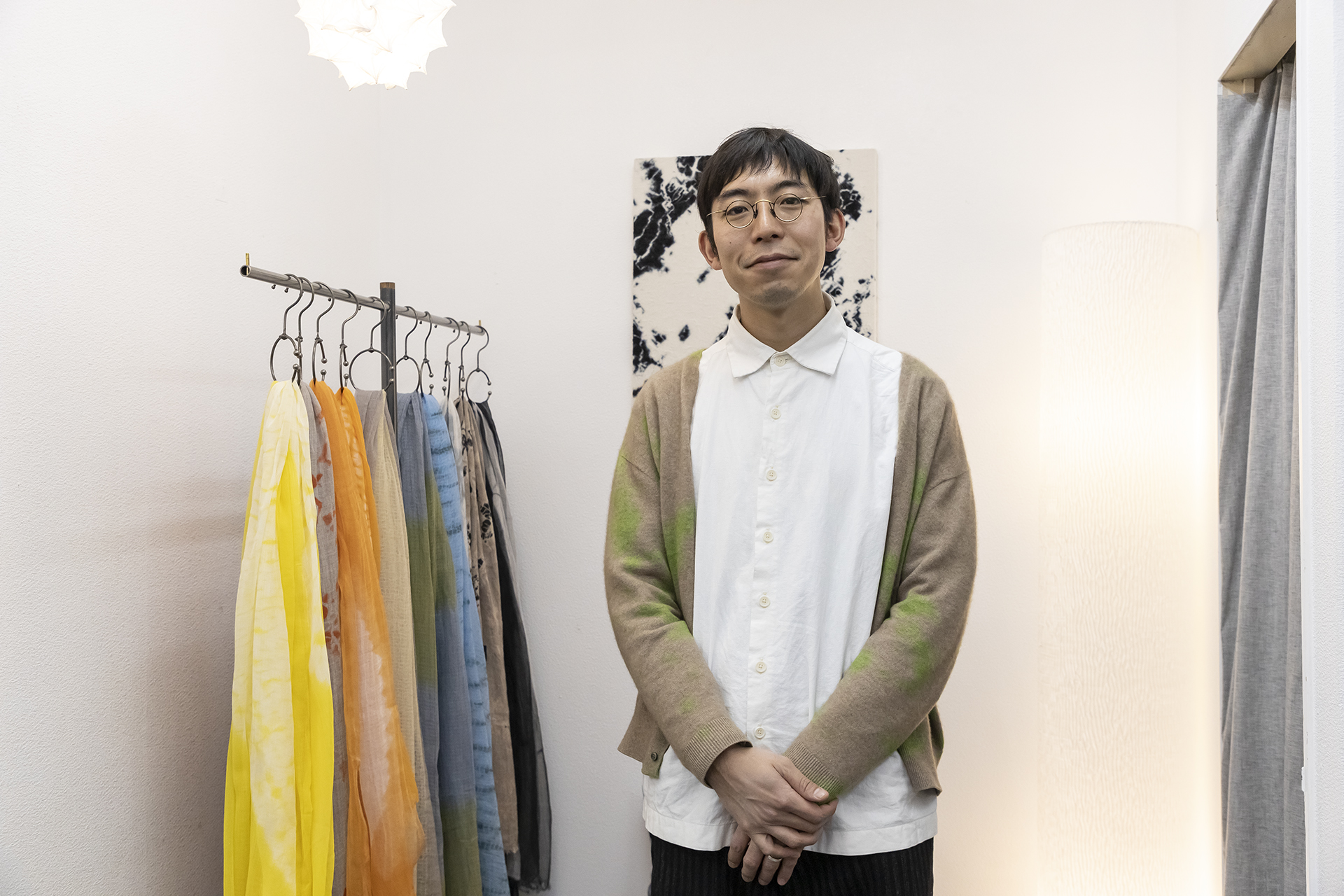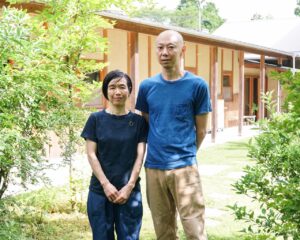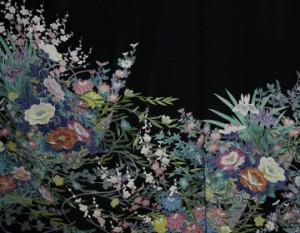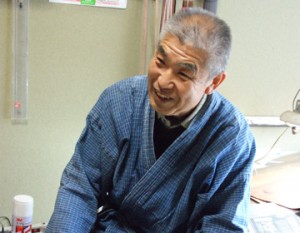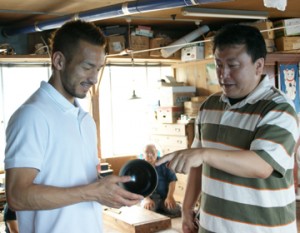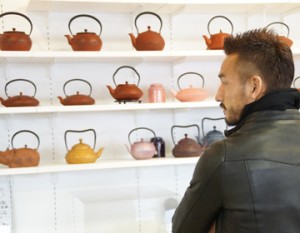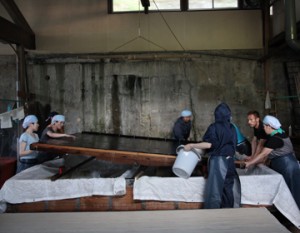Arimatsu Narumi Shibori, a traditional craft in Nagoya, Aichi Prefecture that has continued since the Edo period, has more than 200 different techniques and is unique among the world’s tie-dyeing cultures because of the sheer number of different techniques. Hiroyuki Murase, who was born and raised in the long-established Suzusan Shoten, the family business of Arimatsu shibori, launched the apparel brand “suzusan” to create new value for the technique that has been handed down from generation to generation, not as an old traditional craft.
Arimatsu Shibori has developed through the division of labor since the Edo period.
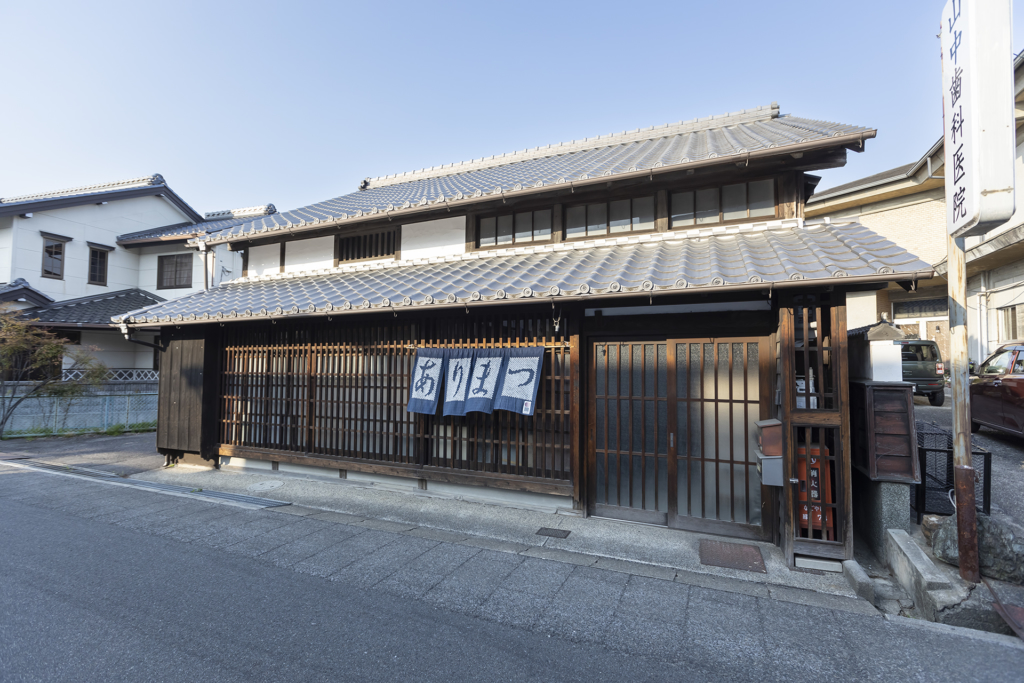
The Arimatsu area in Midori Ward, Nagoya City, Aichi Prefecture, is lined with quaint old-fashioned buildings. The industry that has continued here since the early Edo period is “Arimatsu Narumi Shibori,” tie-dyed fabric. In the early Edo period, the company purchased fabrics from neighboring areas where cotton cultivation was thriving, developed an ingenious tie-dyeing technique, and began making tenugui (hand towels) to sell to travelers passing by on the Tokaido Highway. The products quickly became popular and were even depicted in Hiroshige Ando’s ukiyoe “Fifty-three Stages of the Tokaido Highway.
Shibori is an extremely primitive dyeing technique in which the fabric is tied with thread and dipped in a dye solution such as indigo, creating areas where the dye can penetrate and dye, and areas where the dye cannot penetrate and dye. Because of its simplicity, this technique has been used not only in Japan but also in various parts of the world. What is the reason why Arimatsu shibori has developed into an industry and not just a local folk craft? It is said that the reason is that the division of labor within a region has created a diversity of patterns.
Arimatsu Narumi tie-dyeing with more than 200 patterns
Arimatsu Narumi Shibori has more than 200 patterns, which were used in different ways in daily work, and the range of designs is astonishing.
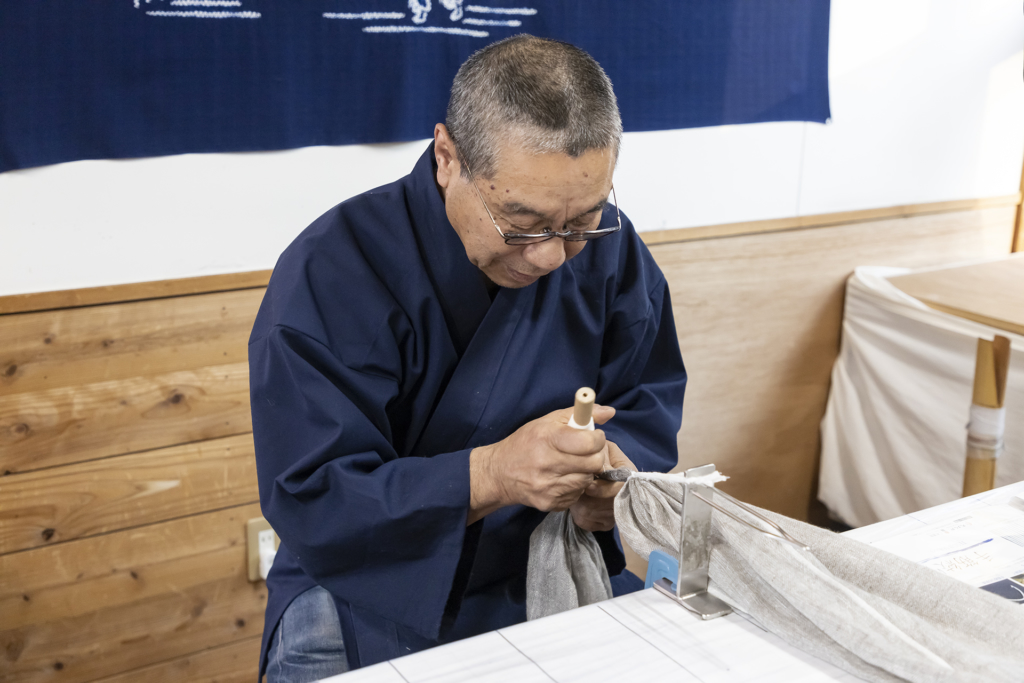
The shibori process can be broken down into the following processes: designing the pattern, pattern carving, pattern imprinting on the cloth based on the pattern, kukuri (binding with thread to create the pattern), dyeing, and finally unraveling the thread, thread removal. In 1977, Hiroyuki’s father, Yutaka, the fourth generation, took over the business from his predecessor, and the company expanded to sell its own original products. The company expanded its value chain to include the sale of original products.
His next move was to expand his business overseas, and in 1992, he participated in the 1st International Shibori Conference held in Nagoya City, Aichi Prefecture, the hometown of Arimatsu Narumi Shibori, which was attended by companies and regions from about 20 countries. This led to communication with experts and artists from around the world to share information, and in 1994, Arimatsu Shibori was exhibited for the first time in Europe in Milan, Italy.
At that time, the company changed its name to Suzusan. Suzusan has been focusing on further increasing its recognition overseas.
From father to son. The baton of tradition to be preserved and passed on.
While Yutaka, the fourth generation, was busy promoting Arimatsu Narumi shibori, his son Hiroyuki went to England in 2004 to study art, hoping to become an artist. He had no intention of taking over the family business, having been told by those around him that the entire Arimatsu Narumi shibori industry would disappear in a dozen years or so.
However, a turning point for Murase and his son came in 2007. It was “The Kintting & Stitching Show” in Birmingham, England. Although he had no intention of taking over the business, he could not help out if his father was going to participate in an event held in his study-abroad destination.
While helping Yutaka, Hiroyuki was impressed by the interest and concern for Arimatsu Narumi Shibori among people from overseas, and he thought that the traditional technique, which is considered old in Japan, could be seen as a new value if the region, people, and perspective changed. That is how fresh, beautiful, and attractive the usual Arimatsu Narumi shibori should be.
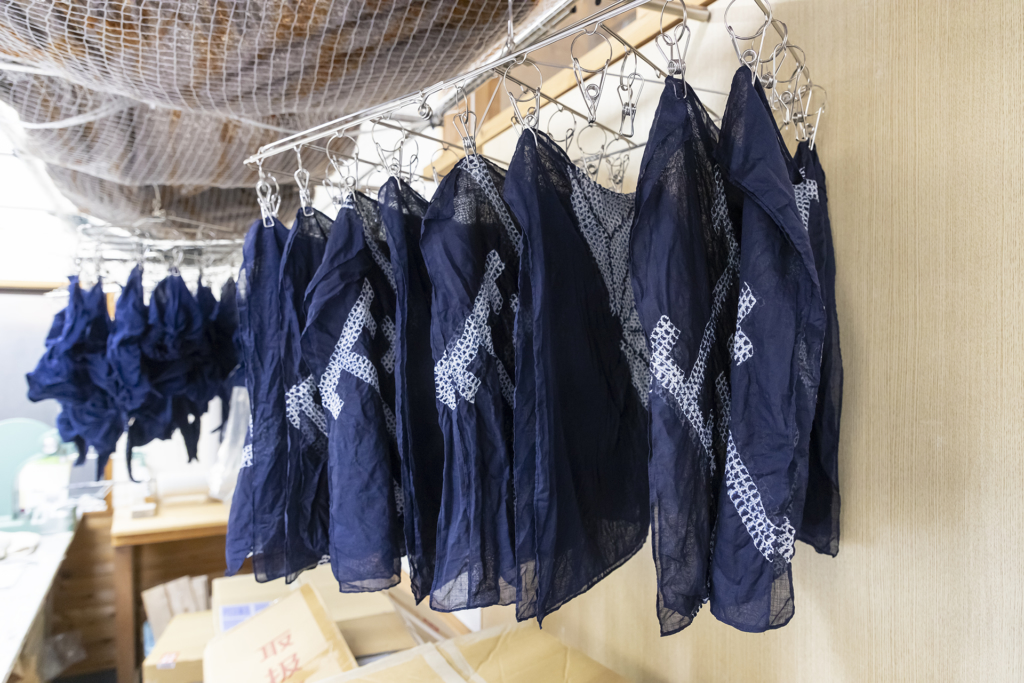
This is how Hiroyuki renewed his interest in Arimatsu Narumi shibori. In order to not only continue to preserve this technique but also to create new expressions by utilizing the things he had seen overseas, he established a local subsidiary, Suzusan e.K. (now Suzusan GmbH & Co. KG), in Düsseldorf, Germany, where he had moved from the United Kingdom. The company started its own brand with a few stoles using “shibori” in cashmere and other materials that were not used in the traditional Arimatsu Narumi shibori. The reason why they decided to compete in the “western” layer, which is different from the standard Japanese kimono with tie-dye, is to avoid competing with the tie-dye business in the local Arimatsu area. We thought it was absolutely necessary to avoid a decline in tradition by starting a brand that was intended to preserve tradition. Therefore, for the first five years after the launch of the brand, he refused business negotiations from Japanese buyers visiting exhibitions in Paris, and made it a rule to sell only overseas. At first, there were not many people who accepted the brand and its items, which were not from anywhere in the world, and it was a constant struggle, but as the brand’s appeal was gradually recognized through passion and persuasion of its merits.
Exhibit at Paris Fashion Week
In 2012, four years after establishing the brand, with the support of the long-established French boutique “LECLAIREUR,” the brand exhibited a small booth of 4 square meters at “Tranoi,” a joint exhibition organized by the store at the time. This was the first time the store exhibited at Paris Fashion Week (commonly known as the Paris Collection). Only four orders were received for the first time. Even so, the brand gradually became well-known by introducing new products every year while expanding its collection, and before long it had grown into a brand that was always visited by many people at the exhibitions it held.
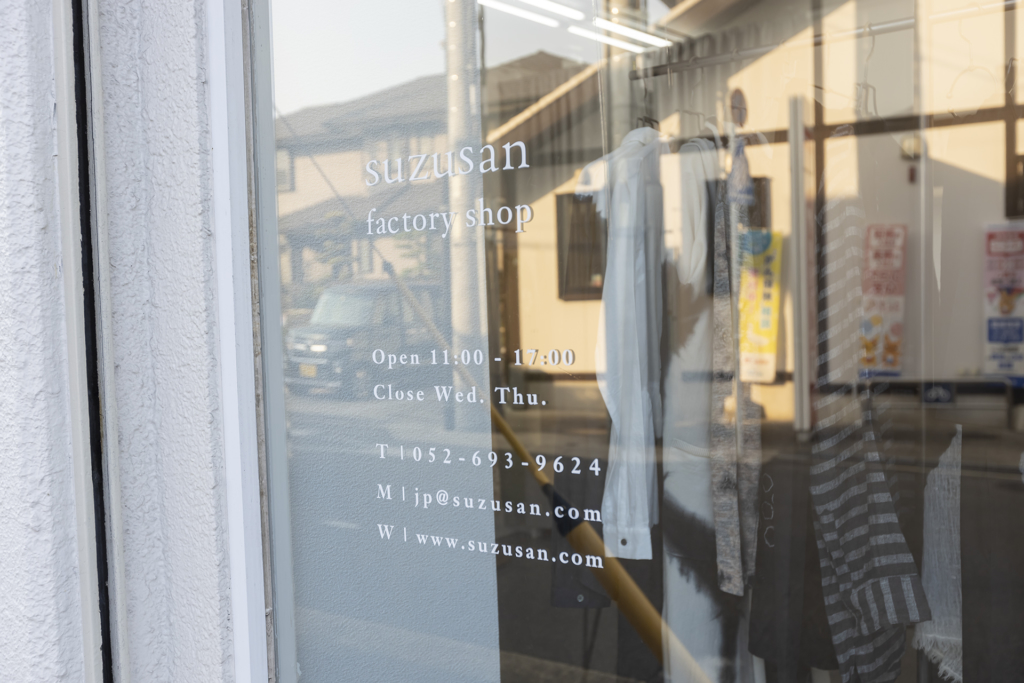
Later, he began to develop the suzusan brand business in Japan, which had been developed only overseas. At that time, suzusan, which had been run by his father as a sole proprietorship, was incorporated as “suzusan Co. Ltd.” The head quarter of the brand operation was run by suzusan in Germany, while the production and domestic sales functions were handled by suzusan in Japan. As the number of craftsmen of Arimatsu Narumi shibori is decreasing year by year, the company aims to create an environment in which all processes are integrated in Arimatsu while expanding sales channels while increasing the value both domestically and internationally, to secure employment for craftsmen and other employees by creating a route for the products to be purchased in the region, and to spin the techniques, know-how, and attractiveness of the products in Arimatsu. The goal was to weave the technology, know-how, and appeal of the products together in Arimatsu.
Connecting local culture to the future
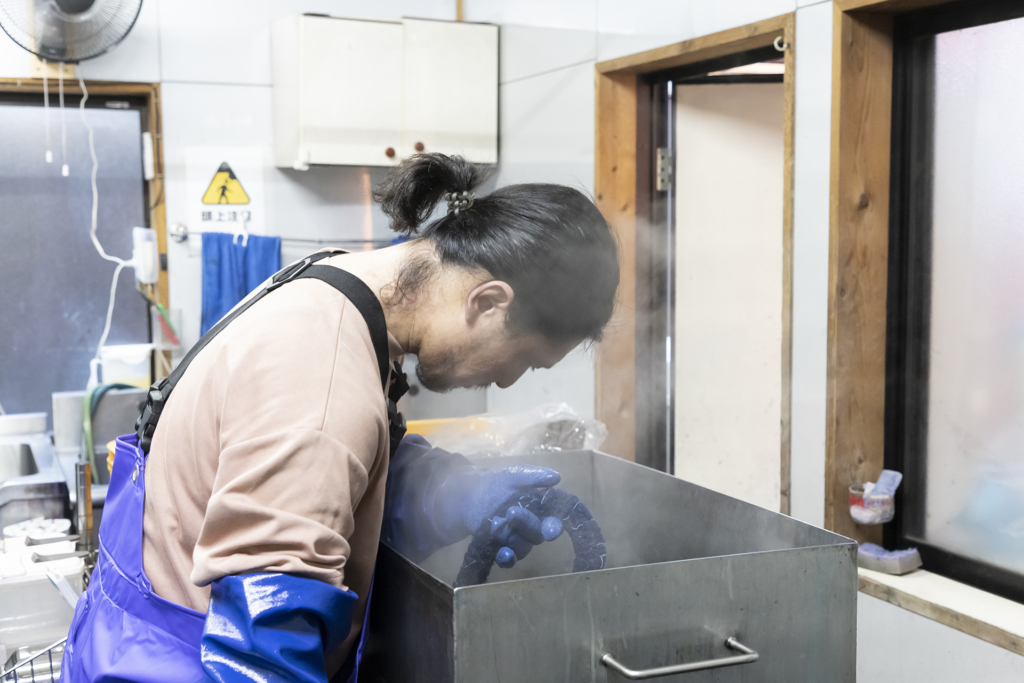
Fifteen years ago, the aging of craftsmen was a serious problem. It was said that in another 15 years, the entire industry of Arimatsu shibori would disappear. Today, the company’s staff consists mainly of people in their 20s and 30s, and the younger generation with an interest in fashion can be seen wearing Arimatsu-shibori items.
Of course, simply waiting and waiting would not have led to the current situation. When the brand was first launched, Mr. Hiroyuki carried a trunk full of Arimatsu-shibori scarves around Europe, repeatedly negotiating directly with stores. This is the creed of Mr. Hiroyuki. He believes that five elements are important for “good craftsmanship”: skill, knowledge, experience, sense, and passion, and he has put all his energy into developing the brand.
As if to prove this, 92 stores from all over the world have visited the brand’s collections held in various countries in recent years. Even today, when the brand is attracting worldwide attention, it does not hold fashion shows, but rather holds exhibitions in its showroom. The brand does not believe that putting on a spectacular show is the culmination of its work as a brand, but rather that the true goal is to deliver carefully crafted products to people who will use them with care and feel their appeal in person.
Hiroyuki says, “We have been promoting Arimatsu shibori to the world for about 15 years now, and our next goal is to create a pathway for those who love Arimatsu shibori overseas to visit Arimatsu with an interest in the region through our brand. He will use his sense of style and experience to convey the appeal of Arimatsu through his own brand.



